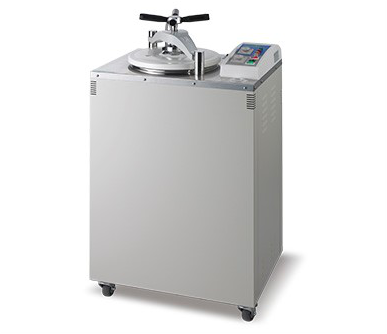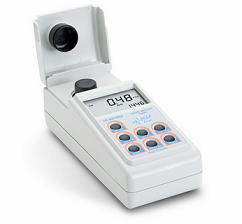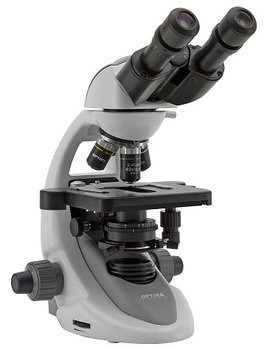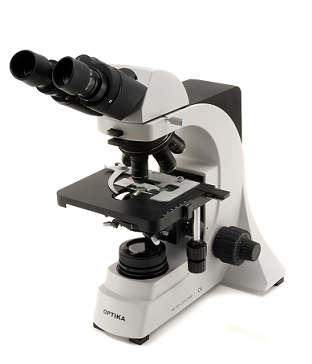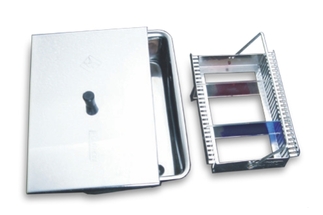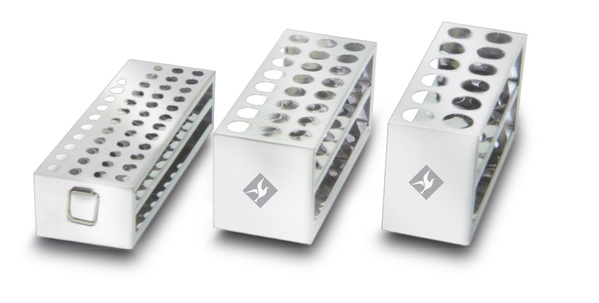Beer Testing Laboratory SetupBeer testing is a important part of producing beer. The shelf life, clarity and taste are all equally important when producing beer. The only way to ensure consistency and quality of beer is to have a beer testing laboratory. The laboratory should have the necessary equipment to be able to perform comprehensive tests for bacteria, oxygen, clarity, pH and yeast cells present, all of which can significantly effect the final product.
We at Rauserv c.c. in Johannesburg, South Africa have tried to create a list of the essentials in a beer testing Laboratory. This equipment can be used to set up a basic beer testing laboratory in which comprehensive tests and procedures for consistency and quality can be conducted. We at Rauserv are offering a turn key solution to any beer testing laboratory. Below is a list of suggested equipment to get your beer quality testing laboratory setup. Please download the attached for the below information in a .pdf format. |
|
1. Anaerobic Jar
Anaerobic Culture Jars are ideal for all tests requiring strict anaerobic conditions in a closed environment. A strong molded and transparent jar, makes it ideal for critical tests requiring visual in process monitoring. A compound gauge (manometer) eliminates guesswork in monitoring cycle process. http://www.rauserv.com/polycarbonate.html
- Cold Catalyst fitted to underside of lid.
- Compound Gauge on lid.
- Two needle valves on lid.
- Safety valve on lid.
- Bridge clamp with tightening screw.
- Transparent, strong and durable moulded jar.
- Aluminium cast lid, heat cured epoxy coated with a bridge clamp for easy tightening.
- Carrier can accommodate twelve petri dishes.
2. Autoclave
An autoclave is an important piece of equipment in a brewing laboratory. It will be used to sterilize all glassware and media. A brewing laboratory regularly uses glassware for sample testing, It is important that all petri-dishes and vials are of the sterile nature to ensure no unwanted bacteria are present. All media used for testing what bacteria is present in the beer must also be sterile otherwise the results will be invalid.
The SA-300VF incorporates heater drying into its operation with a variable drying timer. The SA-300VF temperature is controlled with a pressure switch and is designed with traditional mechanical engineering for customers who are accustomed to and prefer straightforward autoclaves with time-tested quality and durability that is both economical and practical. It has a rotating door lever that laterally slides away for safety. http://www.rauserv.com/sa-300vf-sturdy.html
The SA-300VF incorporates heater drying into its operation with a variable drying timer. The SA-300VF temperature is controlled with a pressure switch and is designed with traditional mechanical engineering for customers who are accustomed to and prefer straightforward autoclaves with time-tested quality and durability that is both economical and practical. It has a rotating door lever that laterally slides away for safety. http://www.rauserv.com/sa-300vf-sturdy.html
- 50 Litre Vertical Chamber
- Heater Drying
- Graduated sterilization timer
- Mechanical pressure control system
- Pressure overload protection
- Overheat protection
- Emergency button
3. Balance
A balance is a useful tool in any micro laboratory, it has a number of uses. They are often used in quality assurance and product testing laboratories to ensure that exact standards are being met. They are used to check uniformity of critical components in terms of precise measurements. Due to the sensitivity, environmental conditions can cause weight variations. Micro balances can be effected by dust particles, thermal fluctuations and moving air, for this reason, it should be closed on in some form of enclosure or hood. See Figure below of an analytical balance.
4. DO (Dissolved Oxygen) Meter / Analyser
Dissolved Oxygen can impact the shelf life, stability and flavor of craft beer, due to this, it is important to be able to monitor the amount of dissolved oxygen in the beer during the brewing process. To do this, a DO meter is required.
Dissolved oxygen is a commonly measured parameter in aquaculture, wastewater treatment, environmental studies, and wine analysis. The HI9146 is a rugged, portable dissolved oxygen (DO) meter designed to provide high accuracy measurements whether in the field or in the lab. The meter features automatic calibration performed at one or two points in saturated air and/or zero oxygen solution. All readings are automatically compensated for temperature variations and can be frozen on the display upon stability using the auto-end feature. Salinity and altitude compensation are user adjustable based on the environmental conditions that are present.
The HI9146 is a rugged, portable dissolved oxygen (DO) meter designed to provide laboratory precision and accuracy under harsh environmental and industrial conditions. This meter offers many features including automatic calibration, auto-endpoint detection, and compensation for temperature, salinity and altitude. The HI9146 is supplied complete with polar graphic probe, PTFE membrane caps, electrolyte fill solution, and rugged carrying case. http://www.rauserv.com/hi9146-portable-do-meter.html
Dissolved oxygen is a commonly measured parameter in aquaculture, wastewater treatment, environmental studies, and wine analysis. The HI9146 is a rugged, portable dissolved oxygen (DO) meter designed to provide high accuracy measurements whether in the field or in the lab. The meter features automatic calibration performed at one or two points in saturated air and/or zero oxygen solution. All readings are automatically compensated for temperature variations and can be frozen on the display upon stability using the auto-end feature. Salinity and altitude compensation are user adjustable based on the environmental conditions that are present.
The HI9146 is a rugged, portable dissolved oxygen (DO) meter designed to provide laboratory precision and accuracy under harsh environmental and industrial conditions. This meter offers many features including automatic calibration, auto-endpoint detection, and compensation for temperature, salinity and altitude. The HI9146 is supplied complete with polar graphic probe, PTFE membrane caps, electrolyte fill solution, and rugged carrying case. http://www.rauserv.com/hi9146-portable-do-meter.html
5. Beer Haze Meter
Beer clarity is an important aspect of consistent beer quality. Visual inspection introduces human error and can affect the reliability of the beer being produced. The brewery should continually monitor the clarity of their beer. A haze meter uses light to determine how clear the beer is. A haze meter is also commonly known as a turbidity. In this case, the Haze Meter is designed specifically for beer analysis.
The Hanna Instruments HI 847492 is an auto diagnostic haze in beer meter. This instrument compensates a beer color to guarantee accurate readings during the brewing process. The optical system consists of an LED and multiple detectors. A two, three or four point calibration can be easily performed at any time using the supplied or user prepared standards. HI 847492 also incorporates a continuous measurement mode to measure the settling rate of suspended matter, and a signal average (AVG) mode to accumulate multiple readings giving a final average value. The average mode is particularly useful to measure samples with suspended particles with different dimensions. http://www.rauserv.com/hi847492-haze-meter.html
The Hanna Instruments HI 847492 is an auto diagnostic haze in beer meter. This instrument compensates a beer color to guarantee accurate readings during the brewing process. The optical system consists of an LED and multiple detectors. A two, three or four point calibration can be easily performed at any time using the supplied or user prepared standards. HI 847492 also incorporates a continuous measurement mode to measure the settling rate of suspended matter, and a signal average (AVG) mode to accumulate multiple readings giving a final average value. The average mode is particularly useful to measure samples with suspended particles with different dimensions. http://www.rauserv.com/hi847492-haze-meter.html
6. Hemocytometer
A hemocytometer is a great piece of equipment used in conjunction with a microscope to determine the amount of yeast cells. The hemocytometer takes a known volume of sample with the use of a pipette. The known volume along with the engraved gridlines can be used to determine the number of yeast cells. The hemocytometer needs to be both clean and dry for this process to be effective. Once the sample is in the hemocytometer, a microscope is used to aid in the counting process. A methodical counting approach needs to be taken to make sure cells are counted accurately. The hemocytometer is crucial in accurate quantity counts of yeast in slurry.
The figure below shows a zoomed in indication of what the hemocytometer grid looks like below the sample of beer.
The hemocytometer must be used in conjunction with a Microscope as seen in the figure below. The microscope magnifies the yeast cells and allows for manual counting of the cells per block of the hemocytometer grid.
The figure below shows a zoomed in indication of what the hemocytometer grid looks like below the sample of beer.
The hemocytometer must be used in conjunction with a Microscope as seen in the figure below. The microscope magnifies the yeast cells and allows for manual counting of the cells per block of the hemocytometer grid.
7. General Incubator
A general incubator is also an important part of a brewing laboratory, it has numerous uses in a micro laboratory. An incubator can be used for cell culturing in a controlled environment to determine bacteria present in the beer. A general Equitron incubator with basic functions is more than sufficient for a beer laboratory. More advanced incubators are available.
8. Inoculating Loop
An inoculating Loop is used to smear microscopic organisms onto agar for inoculation. Touching the inoculating loop in the beer will collect enough microbes for culturing the organism. It uses surface tension to collect the liquid suspended within the loop. Generally the inoculation loop is sterilized with fire.
9. Laminar Flow
A laminar flow, also known as a bench provides a clean working area free of unwanted bacteria. The air passes through filters that thoroughly cleans the air. There is also a UV light that sterilizes the air to ensure no contamination to samples occur. The laminar flow has air flowing steadily, the entire body of air moves at a uniform velocity. This is useful for all sample testing to ensure that there is no cross contamination and that the results are accurate, especially when working with sterile media and petri dishes.
10. Microscopes
Student B-292PLi
A microscope has a couple of uses in a brewery. The first main use is for use with the hemocytometer to count the number of yeast cells present. For this a more basic microscope can be used with 40x objectives as seen below.
This series incorporates all the experience gathered by Optika Microscopes in the field of light microscopy, adapted specifically for routine laboratory bright field applications. These microscope are suitable for routine microscopy and have an ergonomic design for comfortable long-term use. All main controls are located close together, which enables operation with minimal movements.
Model: B-292PLi
Head: Binocular, 360° rotating, 30° inclined.
Eyepieces: Wide Field 10x/20mm
Nosepiece: Quadruple, reversed
Objectives: Infinity corrected E-PLAN 4x/0.10, 10x/0.25, 40x/0.65, 100x/1.25
Stage: Double layer, 150x133 mm with X-Y moving range 75x50mm
Focusing: Coaxial coarse and fine focusing
Illuminator: X-LED3 system with adjustable intensity
Condenser: Sliding-in, 1.25 N.A. Abbe type with adjustable height and iris diaphragm
Power supply: 100-240 Vac 50-60 Hz external power adapter 6Vdc output
This series incorporates all the experience gathered by Optika Microscopes in the field of light microscopy, adapted specifically for routine laboratory bright field applications. These microscope are suitable for routine microscopy and have an ergonomic design for comfortable long-term use. All main controls are located close together, which enables operation with minimal movements.
Model: B-292PLi
Head: Binocular, 360° rotating, 30° inclined.
Eyepieces: Wide Field 10x/20mm
Nosepiece: Quadruple, reversed
Objectives: Infinity corrected E-PLAN 4x/0.10, 10x/0.25, 40x/0.65, 100x/1.25
Stage: Double layer, 150x133 mm with X-Y moving range 75x50mm
Focusing: Coaxial coarse and fine focusing
Illuminator: X-LED3 system with adjustable intensity
Condenser: Sliding-in, 1.25 N.A. Abbe type with adjustable height and iris diaphragm
Power supply: 100-240 Vac 50-60 Hz external power adapter 6Vdc output
Laboratory Microscope B-500Bi
The other use requires a more advanced microscope, this would be used for analyzing bacteria in the beer. This would be used along with the staining racks. The slides would first be stained and dried and then viewed under a microscope with 100x oil immersed objectives as seen below. These more advanced microscopes would also be able to be used for the yeast cell counting with a hemocytometer with 40x objectives.
The B-500 microscopes have been designed for the best performance in routine laboratory use. According to the models, two different optical systems are available (InfiniFix and IOS).
Model: B-500Bi
Optical System: IOS
Head: Binocular 360°rotating 30° inclined
Eyepiece: Wide Field 10X / 22 mm
Objectives: Infinity Plan Achro 4x, 10x, 40x, 100x (oil immersion)
Revolver: Quintuple reversed
Stage: Double layer with mechanical sliding stage, 175x145 mm
Focusing: Coaxial coarse and fine control knobs
Condenser: Swing-out 0.90 N.A., centrable
Illuminator: OPTIKA X-LED™ illuminator.
The B-500 microscopes have been designed for the best performance in routine laboratory use. According to the models, two different optical systems are available (InfiniFix and IOS).
Model: B-500Bi
Optical System: IOS
Head: Binocular 360°rotating 30° inclined
Eyepiece: Wide Field 10X / 22 mm
Objectives: Infinity Plan Achro 4x, 10x, 40x, 100x (oil immersion)
Revolver: Quintuple reversed
Stage: Double layer with mechanical sliding stage, 175x145 mm
Focusing: Coaxial coarse and fine control knobs
Condenser: Swing-out 0.90 N.A., centrable
Illuminator: OPTIKA X-LED™ illuminator.
11. pH Meter
To produce quality beer it is necessary to regularly check the PH levels of the beer being brewed. The PH meter uses conductivity of the PH to determine the levels in the solution. This is one of the most crucial pieces of equipment in a brewing laboratory. It is important to ensure the PH meter provides accurate results and thus, usually a bench top model is the least portable, most expensive and provides the most precise results.
The Hanna Instruments HI 9124 is a waterproof pH meter. A large dual-level LCD displays both the pH and temperature along with an operational guide. Graphic symbols are displayed to help the users during the calibration process. The pH calibration procedure is automatic with five memorized pH buffer values and buffer recognition to simplify the calibration process. This meter utilizes the HI 1230B double junction pH electrode. The double junction helps to minimize junction contamination for accurate, consistent results. http://www.rauserv.com/hi9124-portable-waterpr.html
The Hanna Instruments HI 9124 is a waterproof pH meter. A large dual-level LCD displays both the pH and temperature along with an operational guide. Graphic symbols are displayed to help the users during the calibration process. The pH calibration procedure is automatic with five memorized pH buffer values and buffer recognition to simplify the calibration process. This meter utilizes the HI 1230B double junction pH electrode. The double junction helps to minimize junction contamination for accurate, consistent results. http://www.rauserv.com/hi9124-portable-waterpr.html
12. Reverse Osmosis System
The reverse osmosis system is generally used for micro-testing, different systems provide different qualities of water. The higher end units provide Ultra-Pure water with minimal contaminants. For the purpose of beer testing, it is not necessary to have the top end RO System but can prove to be a useful piece of equipment in the testing process. http://www.rauserv.com/water-purification-systems.html
13. Slide Staining Rack
The slide staining rack is a very useful piece of equipment for staining slides before use with a microscope. The slide staining rack comes with a trough that holds the die whiles the slides are lowered into the stain.
The slide drying racks are used for drying the slides after they have been stained. There are 3 different ones available as seen in the figure below. They can lie down, stand up or rest on two bars, this depends on the application and personal preference.
The slide drying racks are used for drying the slides after they have been stained. There are 3 different ones available as seen in the figure below. They can lie down, stand up or rest on two bars, this depends on the application and personal preference.
14. Test Tube Rack
Stainless Steel Test Tube Racks for general laboratory use. Available in different sizes.
The stainless steel test tube racks can handle the heat from incubators, they are long lasting and easy to clean. A large consideration is that there is a very small area in contact with the test tubes meaning that the heat transfer from the test tubes to the racks is extremely low.
The stainless steel test tube racks can handle the heat from incubators, they are long lasting and easy to clean. A large consideration is that there is a very small area in contact with the test tubes meaning that the heat transfer from the test tubes to the racks is extremely low.


